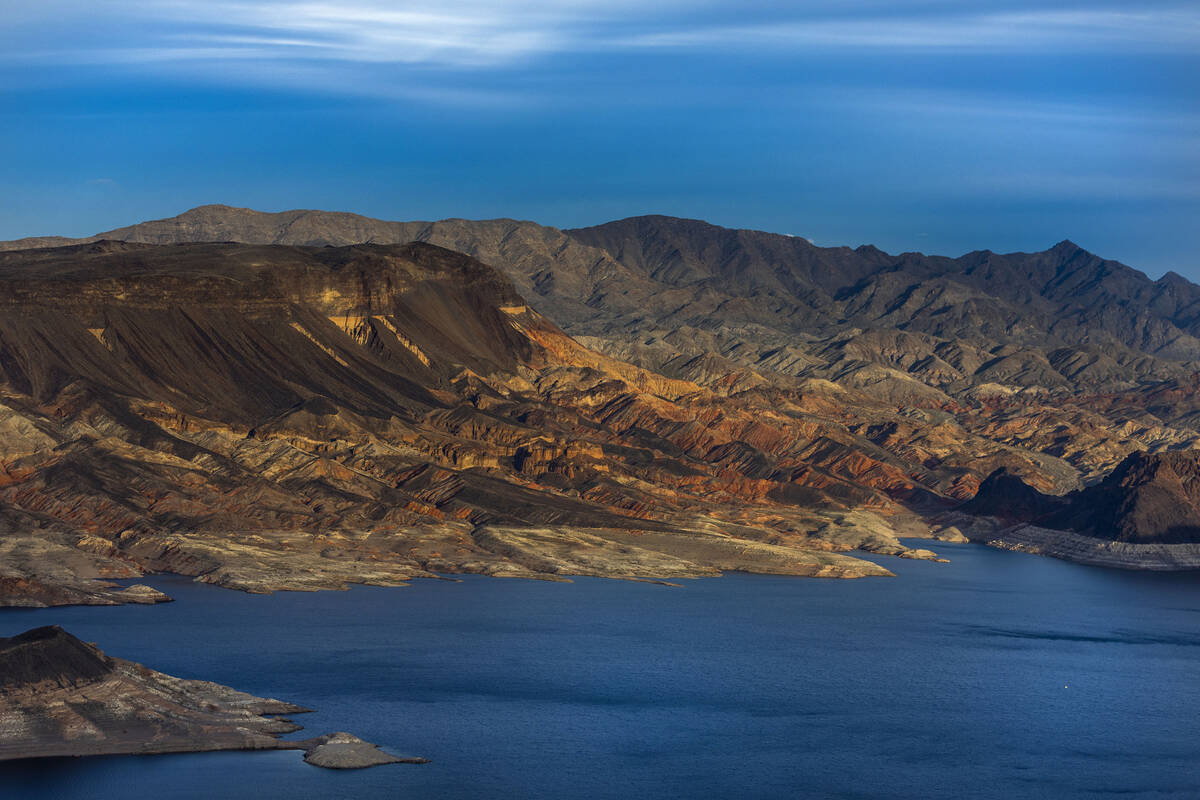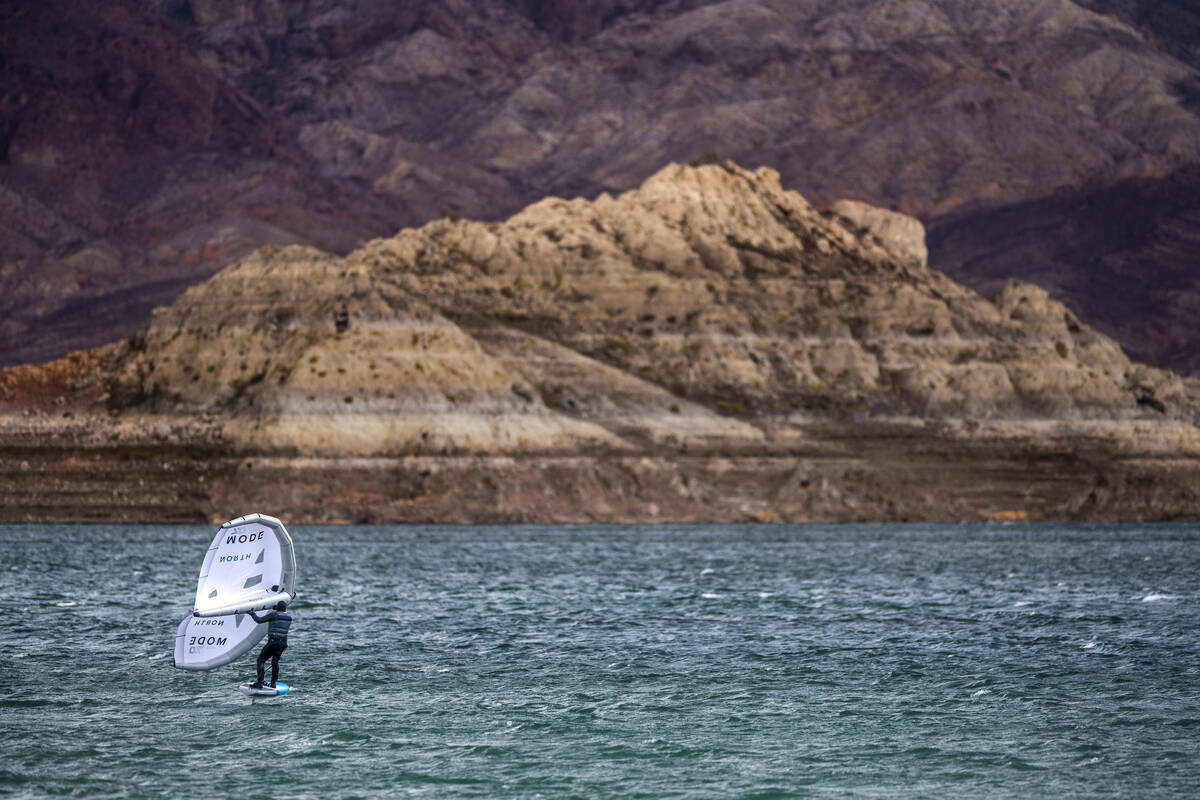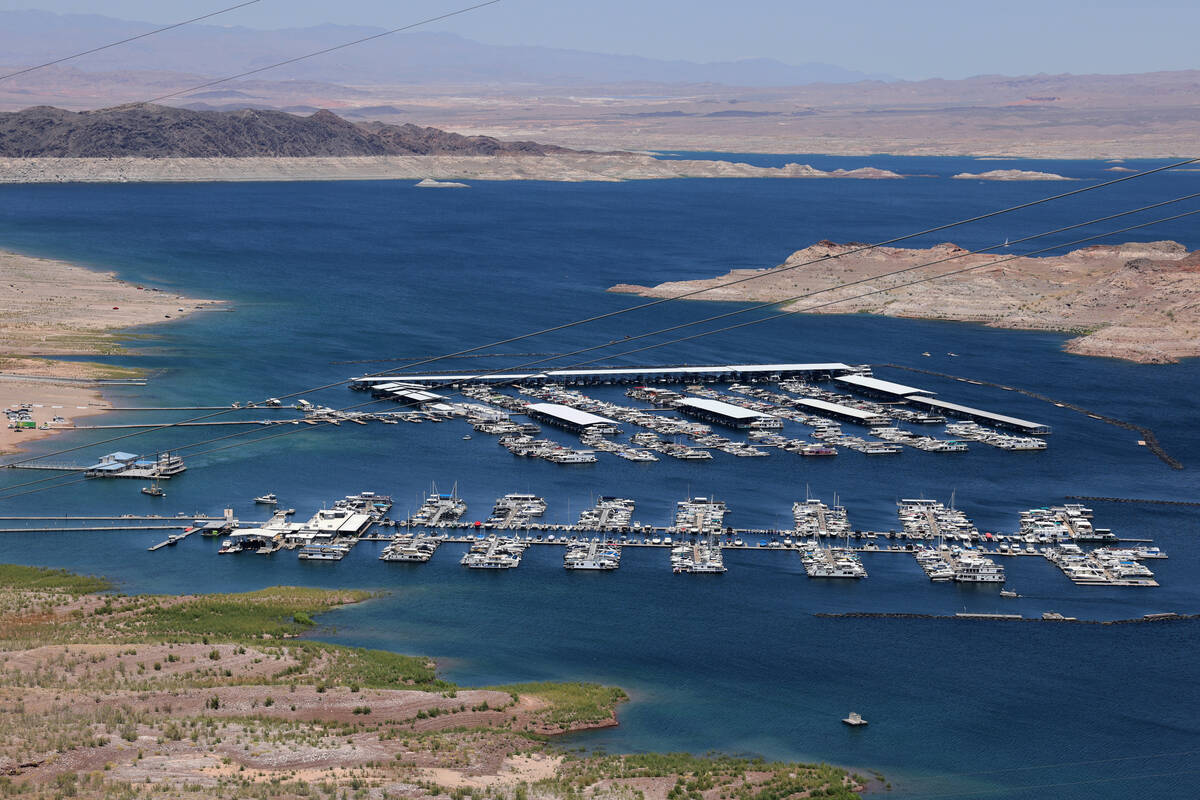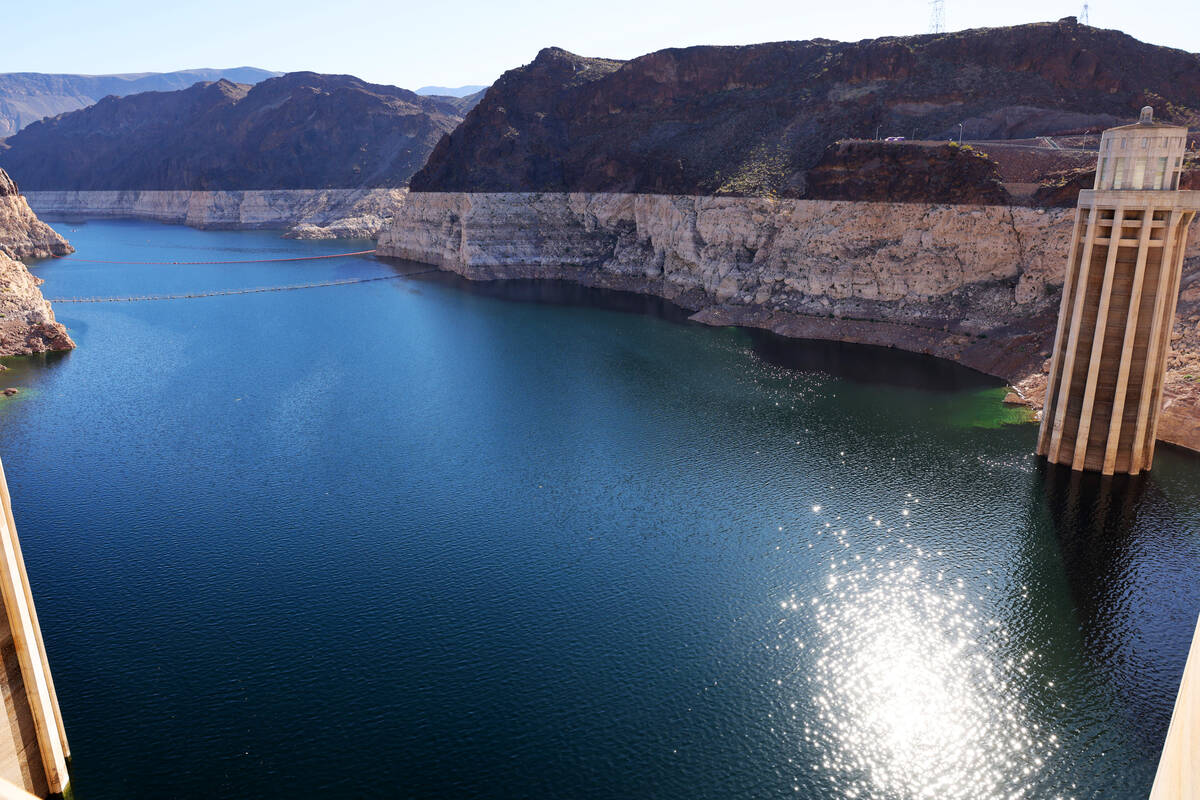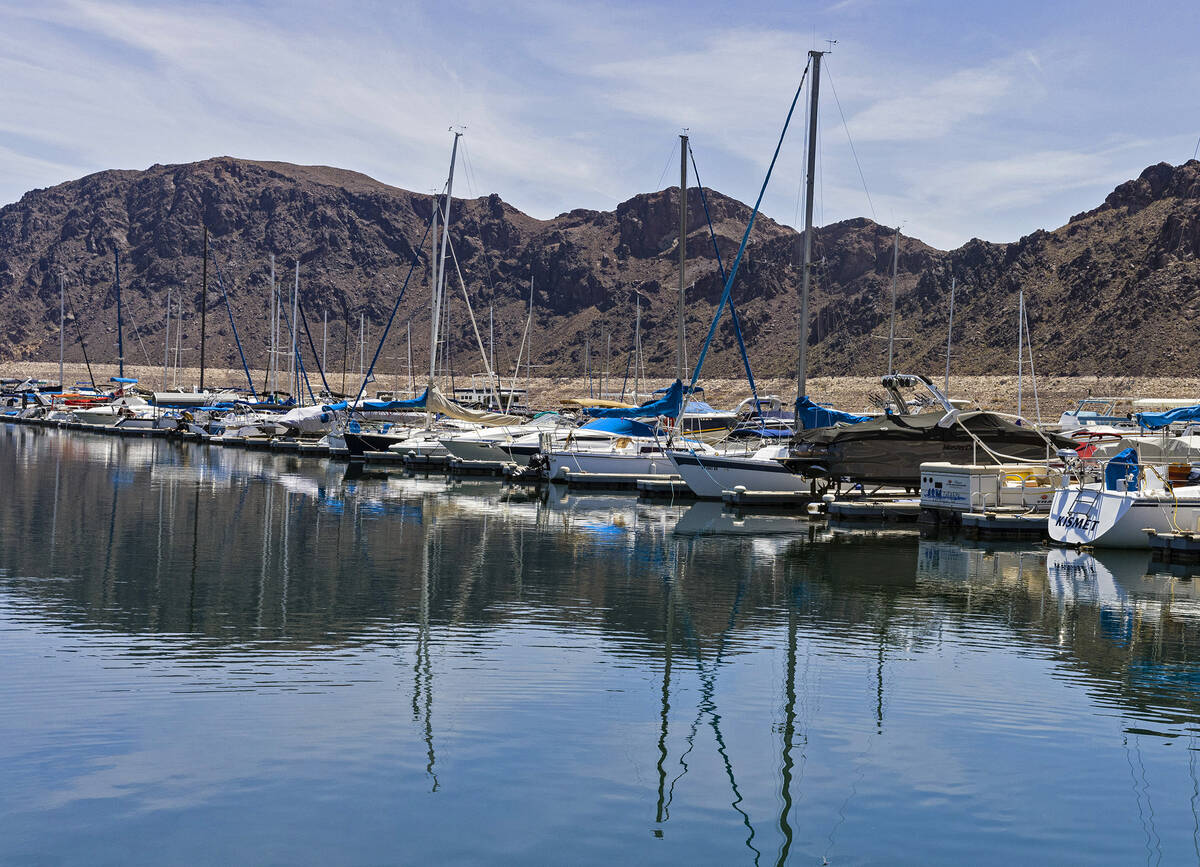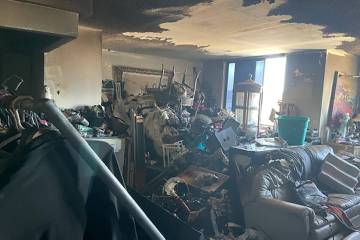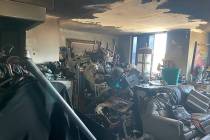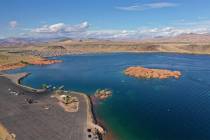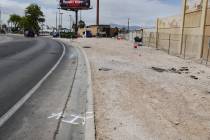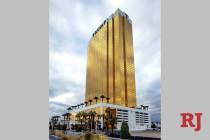Lake Mead’s rise remains steady despite record heat
Not even Las Vegas’ hottest month on record could knock Lake Mead’s timely rise off course.
The reservoir east of Las Vegas ended July at just over 1,061 feet in elevation, more than 20 feet higher than where the lake’s surface sat at the end of July last year.
That’s about half a foot higher than the Bureau of Reclamation projected in its latest forecast released in the middle of July, and about 1 foot higher than the agency forecast in its June projections. That’s fairly typical for the summer months, said Colby Pellegrino, deputy general manager of resources for the Southern Nevada Water Authority.
“The Colorado River Basin still remains snowmelt-driven. And despite the warm summer, the majority of that water is snow that’s already on the ground, and for the most part, melted off,” Pellegrino said.
July set a new record for the hottest month ever recorded in Las Vegas, according to the National Weather Service. The average daily temperature for the month came in at 97.3 degrees — more than a full degree hotter than the previous hottest July in 2010.
Those temperatures likely increased evaporation somewhat, but the effect is much smaller than if well-above-average temperatures were to come during the winter months, Pellegrino said.
One good winter won’t be enough
While both of the Colorado River’s two main storage reservoirs are in better shape than they were this time last year, they are still far below their full capacity. Lake Mead, which supplies about 90 percent of Southern Nevada’s water, sat at just 32 percent of its full capacity as of Monday, while Lake Powell was 40 percent full.
Despite the most recent winter giving the river that supplies water to 40 million Americans a needed reprieve, Pellegrino said, it certainly “has not reset the drought.”
“We know that climate change is going to make us even warmer and drier than we are today. And our use is exceeding our supplies,” Pellegrino said. “We still need to roll up our sleeves and figure out ways to use less water.”
The latest forecasts show Lake Mead’s levels falling again next year, dropping to a low point of about 1,052 feet by September 2024.
The Bureau of Reclamation is expected to release its August 24-month projection in the coming weeks, a forecast that is used to determine shortage conditions for the Colorado River system for the coming year.
Current projections for Lake Mead’s water levels would keep Nevada and Arizona in water shortages for 2024, although those shortages would be slightly less than this year’s cuts.
More water, less use
The main reason for Lake Mead’s rise this year can be traced to this year’s well-above-average snowpack in the Rocky Mountains, which provide the main source of runoff into the Colorado River and its tributaries.
The amount of water that melted off and made its way into the river system was enough for the Bureau of Reclamation to release far more water from Glen Canyon Dam at Lake Powell this year, which means more water flowing downstream into Lake Mead.
Also helping the equation is that the three lower basin states — Nevada, Arizona and California — are using less water from the river system this year.
The three lower basin states combined are on pace to use 6.2 million acre-feet of Colorado River water, about 1.3 million acre-feet less than the total allocation they would receive in a normal, nonshortage year.
Pellegrino attributed those reductions in use to the states rallying around an agreement struck in May to voluntarily reduce water use by a total of 3 million acre-feet through 2026.
While that agreement awaits approval by the federal government, Pellegrino said, the lower basin states are already taking advantage of available federal funding aimed at boosting water conservation programs.
Contact Colton Lochhead at clochhead@reviewjournal.com. Follow @ColtonLohhead on Twitter.



